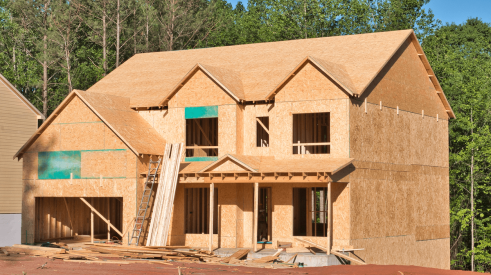Demographics locally have always figured into a builder’s planning. Nationally, demographics do something different. They help paint a picture of a housing market in the aggregate. Major trends and themes emerge from these national statistics. Over the last 15 to 20 years, legal immigration and the massive shift toward western and southern states have substantially impacted home building, while a third trend, the high home-owning progression of the Baby Boom generation has thoroughly dominated the industry. Now comes analysis that leading-edge Boomers may be playing a larger role in the ongoing housing slump than previously thought.
University of Virginia demographer William Lucy recently came forward with an analysis of census data suggesting that the record oversupply of housing has less to do with the aftermath of the sub-prime mortgage debacle than it does simple demographics.
According to Lucy, the number of people age 55 or older increased by 8 million over the past 10 years. This, incidentally, is a cohort where homeownership is very high, approximately 80 percent. Meanwhile, the number of people age 30 to 45 declined by 3.6 million for a net change of 11.6 million between the two groups since 2000. To demographers, people who regularly use age and gender population charts with younger people at the bottom and older people at the top, this switch from young to old creates a noticeable overhang in the charts they see.
“The overhang comes because there has not been an increase in the home buying age groups,” says Lucy. “So you have a ratio from the older to the younger groups that is vastly different from the past.”
In 1990, the ratio of 55 and older against those age 30 to 45 was 3 to 1. In 2000, it jumped to 3.5 to 1. Today it stands at 5 to 1, older people to younger.
“The housing surplus is huge, and that is a big change from the past. Any surplus in the past was a function of overbuilding, but that is not the case now,” Lucy explains. “Now the oversupply is almost completely the result of changing demographics.”
For years, builders have been studying the implications of aging Boomers as home buyers. The focus has been on lifestyle preferences, aging-in-place, etc. This credible new analysis, while not a complete surprise, does put things in a different light. For example, demographer William Lucy feels that news coverage of the housing crisis is misguided and potentially hurting our chances of a quicker recovery. “I think there is a real problem with the way the housing market is being interpreted. It diminishes consumer confidence and employer confidence.”
Let’s say the economy begins growing and our high unemployment rate falls. When that happens home building will certainly improve. Do we face a structurally different market as we grapple with the implications of a smaller home buying contingent? The answer is yes. Our 75th Anniversary issue in January 2011 will feature a full demographic trends analysis that will help provide some guidance. It will be an opportunity to pause and consider the industry’s accomplishments as well as the future of the building business, which will, for years to come, still be dictated to some extent by the housing needs of Baby Boomers.
Advertisement
Related Stories
Single-Family Homes
What Does It Cost to Build a Single-Family Home?
A closer look at the itemized costs in each stage of construction for a single-family home
Builders
A Look at the Boom in Home Builder Stocks During 2023
In 2023, stocks for the 10 biggest U.S. home builders outperformed the S&P 500. What does that say about the housing market?
Financials
Housing Demand Could Rebound in 2024 as Mortgage Rates Ease
The Mortgage Bankers Association predicts lower mortgage rates could bring homebuyers back into the market in 2024






